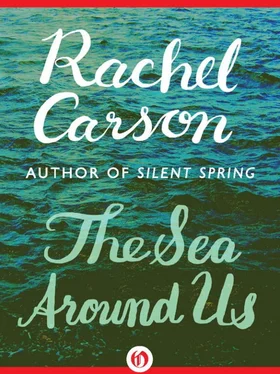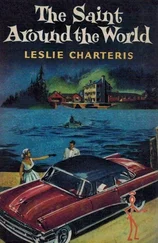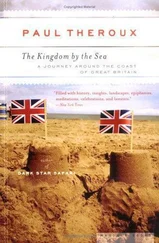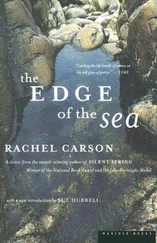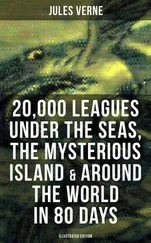So, little by little, through many voyages undertaken over many centuries, the fog and the frightening obscurity of the unknown were lifted from all the surface of the Sea of Darkness. How did they accomplish it—those first voyagers, who had not even the simplest instruments of navigation, who had never seen a nautical chart, to whom the modern miracles of loran, radar, and sonic sounding would have been fantasied beyond belief? Who was the first man to use a mariner’s compass, and what were the embryonic beginnings of the charts and the sailing directions that are taken for granted today? None of these questions can be answered with finality; we know only enough to want to know more.
Of the methods of those secretive master mariners, the Phoenicians, we cannot even guess. We have more basis for conjecture about the Polynesians, for we can study their descendants today, and those who have done so find hints of the methods that led the ancient colonizers of the Pacific on their course from island to island. Certainly they seem to have followed the stars, which burned brightly in the heavens over those calm Pacific regions, which are so unlike the stormy and fog-bound northern seas. The Polynesians considered the stars as moving bands of light that passed across the inverted pit of the sky, and they sailed toward the stars which they knew passed over the islands of their destination. All the language of the sea was understood by them: the varying color of the water, the haze of surf breaking on rocks yet below the horizon, and the cloud patches that hang over every islet of the tropic seas and sometimes seem even to reflect the color of a lagoon within a coral atoll.
Students of primitive navigation believe that the migrations of birds had meaning for the Polynesians, and that they learned much from watching the flocks that gathered each year in the spring and fall, launched out over the ocean, and returned later out of the emptiness into which they had vanished. Harold Gatty believes the Hawaiians may have found their islands by following the spring migration of the golden plover from Tahiti to the Hawaiian chain, as the birds returned to the North American mainland. He has also suggested that the migratory path of the shining cuckoo may have guided other colonists from the Solomons to New Zealand.
Tradition and written records tell us that primitive navigators often carried with them birds which they would release and follow to land. The frigate bird or man-of-war bird was the shoresighting bird of the Polynesians (even in recent times it has been used to carry messages between islands), and in the Norse Sagas we have an account of the use of ‘ravens’ by Floki Vilgerdarson to show him the way to Iceland, ‘since seafaring men had no loadstone at that time in the north… Thence he sailed out to sea with the three ravens… And when he let loose the first it flew back astern. The second flew up into the air and back to the ship. The third flew forward over the prow, where they found land.’
In thick and foggy weather, according to repeated statements in the Sagas, the Norsemen drifted for days without knowing where they were. Then they often had to rely on observing the flight of birds to judge the direction of land. The Landnamabok says that on the course from Norway to Greenland the voyager should keep far enough to the south of Iceland to have birds and whales from there. In shallow waters it appears that the Norsemen took some sort of soundings, for the Historia Norwegiae records that Ingolf and Hjorleif found Iceland ‘by probing the waves with the lead.’
The first mention of the use of the magnetic needle as a guide to mariners occurs in the twelfth century after Christ, but as much as a century later scholars were expressing doubt that sailors would entrust their lives to an instrument so obviously invented by the devil. There is fair evidence, however, that the compass was in use in the Mediterranean about the end of the twelfth century, and in northern Europe within the next hundred years.
For navigating the known seas, there had been the equivalent of our modern Sailing Directions for a great many centuries before this. The portolano and the peripli guided the mariners of antiquity about the Mediterranean and Black seas. The portolano were harbor-finding charts, designed to accompany the coast pilots or peripli, and it is not known which of the two was developed first. The Periplus of Scylax is the oldest and most complete of these ancient Coast Pilots that have survived the hazards of the intervening centuries and are preserved for us. The chart which presumably accompanied it no longer exists, but the two were, in effect, a guide to navigation of the Mediterranean in the fourth or fifth century B.C.
The periplus called Stadiasmus, or circumnavigation of the great sea dates from about the fifth century after Christ but reads surprisingly like a modern Pilot, giving distances between points, the winds with which the various islands might be approached, and the facilities for anchorage or for obtaining fresh water. So for example, we read, ‘From Hermaea to Leuce Acte, 20 stadia hereby lies a low islet at a distance of two stadia from the land, there is anchorage for cargo boats, to be put into with west wind; but by the shore below the promontory is a wide anchoring-road for all kinds of vessels. Temple of Apollo, a famous oracle; by the temple there is water.’
Lloyd Brown, in his Story of Maps, says that no true mariners’ chart of the first thousand years after Christ has been preserved or is definitely known to have existed. This he ascribes to the fact that early mariners carefully guarded the secrets of how they made their passages from place to place; that sea charts were ‘keys to empire’ and a ‘way to wealth’ and as such were secret, hidden documents. Therefore, because the earliest specimen of such a chart now extant was made by Petrus Vesconte in 1311 does not mean that many had not existed before it.
It was a Dutchman who produced the first collection of navigational charts bound together in book form—Lucas Janssz Waghenaer. The Mariner’s Mirror of Waghenaer, first published in 1584, covered the navigation of the western coast of Europe from the Zuyder Zee to Cadiz. Soon it was issued in several languages. For many years ‘Waggoners’ guided Dutch, English, Scandinavian, and German navigators through eastern Atlantic waters, from the Canaries to Spitsbergen, for succeeding editions had extended the areas covered to include the Shetland and Faroe islands and even the northern coast of Russia as far as Novaya Zemlya.
In the sixteenth and seventeenth centuries, under the stimulus of fierce competition for the wealth of the East Indies, the finest charts were prepared not by governmental agencies, but by private enterprise. The East India companies employed their own hydro-graphers, prepared secret atlases, and generally guarded their knowledge of the sailing passages to the East as one of the most precious secrets of their trade. But in 1795 the East India Company’s hydrographer, Alexander Dalrymple, became official hydrographer to the Admiralty, and under his direction the British Admiralty began its survey of the coasts of the world from which the modern Admiralty Pilots stem.
Shortly thereafter a young man joined the United States Navy—Matthew Fontaine Maury. In only a few years Lieutenant Maury was to make his influence felt on navigation all over the world, and was to write a book, The Physical Geography of the Sea, which is now considered the foundation of the science of oceanography. After a number of years at sea, Maury assumed charge of the Depot of Charts and Instruments—the forerunner of the present Hydrographic Office—and began a practical study of winds and currents from the standpoint of the navigator. Through his energy and initiative a world-wide co-operative system was organized. Ships’ officers of all nations sent in the logs of their voyages, from which Maury assembled and organized information, which he incorporated in navigational charts. In return, the co-operating mariner received copies of the charts. Soon Maury’s sailing directions were attracting world notice: he had shortened the passage for American east-coast vessels to Rio de Janeiro by 10 days, to Australia by 20 days, and around the Horn to California by 30 days. The co-operative exchange of information sponsored by Maury remains in effect today, and the Pilot Charts of the Hydrographic Office, the lineal descendants of Maury’s charts, carry the inscription: ‘Founded on the researches of Matthew Fontaine Maury while serving as a Lieutenant in the United States Navy.’
Читать дальше
